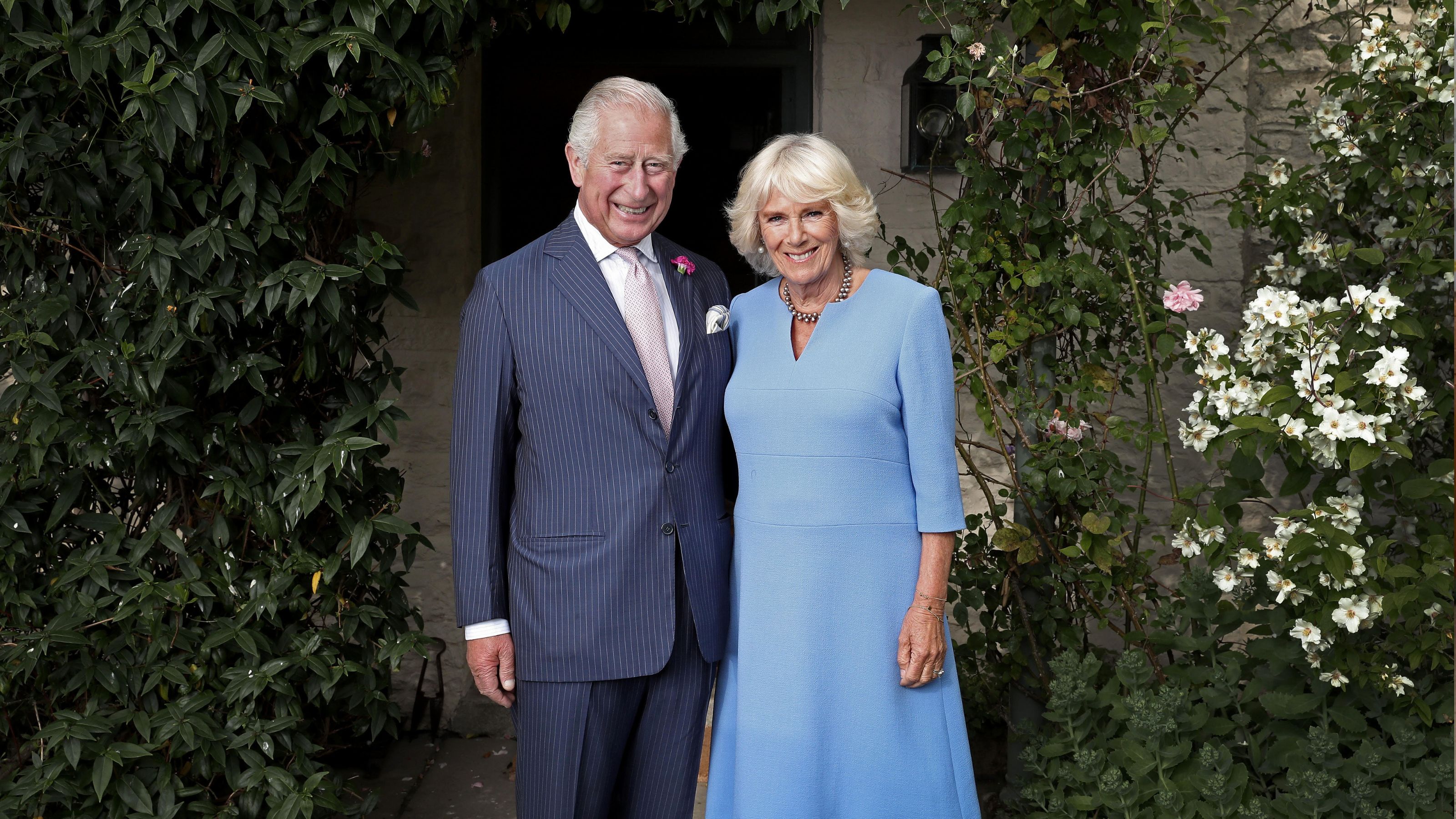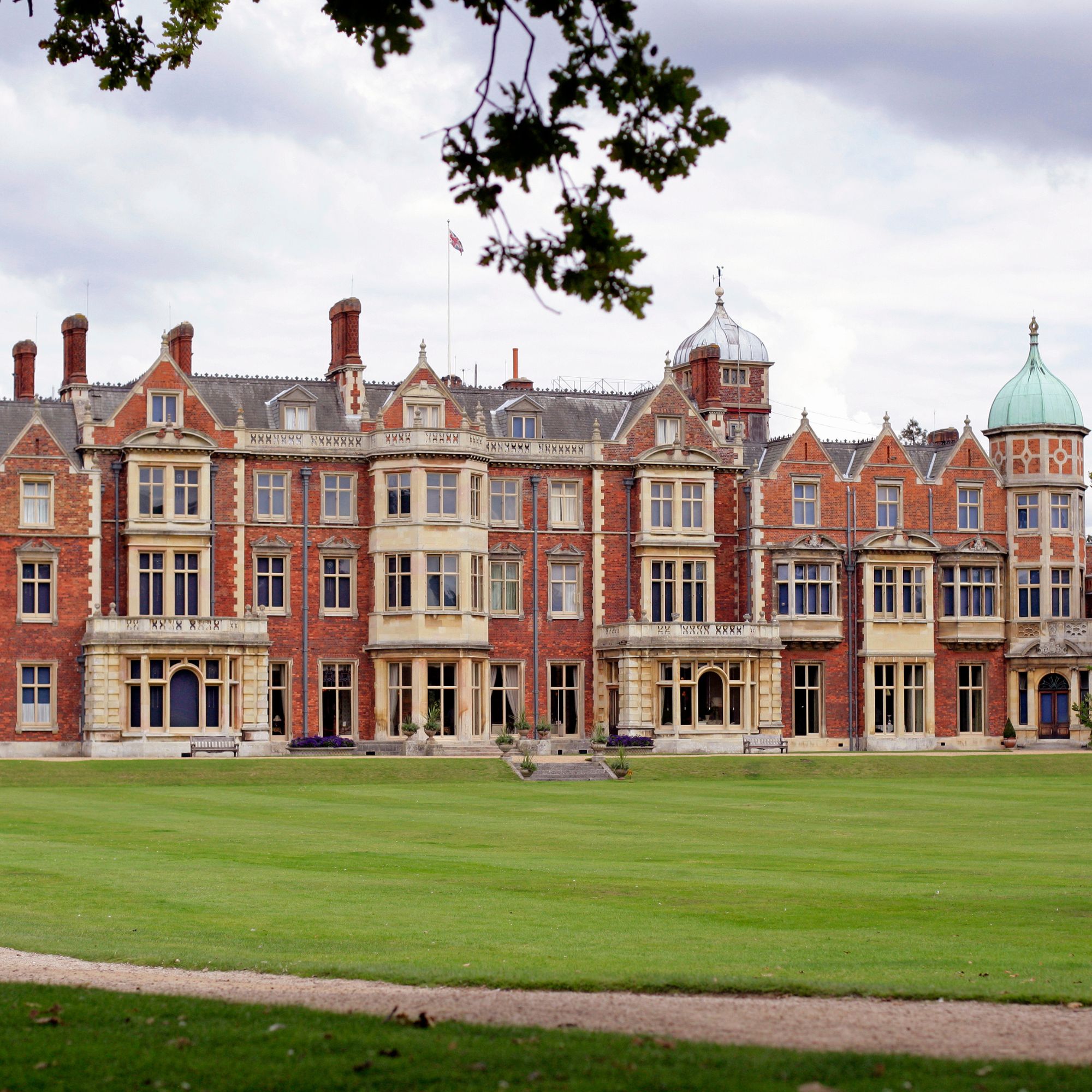King Charles shows off his take on the hottest garden trend of the year at Sandringham
King Charles III has given the gardens at Sandringham a royal overhaul


A passionate and dedicated gardener, King Charles III is absolutely our most green-fingered (and eco-friendly) monarch to date.
It makes sense, then, that the head of the royal family has brought a whole host of new and exciting garden ideas to the estate at Sandringham.
In fact, he's made a point of giving the topiary garden at his Norfolk Home a complete overhaul – and tackled one of this year's biggest garden trends in the process.

That's right: the topiary garden at Sandringham has now been unveiled to members of the public after five months of renovations.
And, taking inspiration from the rewilding movement, gardeners at the estate have used low maintenance lawn alternatives and drought-tolerant plants to create what people are calling a 'future-proof' garden.
King Charles III embraces eco-friendly garden trend
Sharing an impressive aerial shot of the topiary garden on Twitter, royal commentator Dickie Arbiter writes: 'When King Charles inherited the Sandringham Estate last year, he set about establishing an eco-friendly Topiary Garden on Sandringham's west lawn.
'In 2019, The King spoke of a similar garden established by his great-great-grandmother Queen Alexandra in the old dairy building.'
Sign up to our newsletter for style inspiration, real homes, project and garden advice and shopping know-how
Check it out:
When King Charles inherited the #SandringhamEstate last year he set about establishing an eco-friendly Topiary Garden on Sandringham's west lawn. In 2019 The King spoke of a similar garden established by his great-great-grandmother Queen Alexandra in the old dairy building pic.twitter.com/sfkJW5CkZeJune 13, 2023
When King Charles III first announced the plans for the overhaul, a statement on his behalf read: 'In recent years, with changing weather patterns the current expanse of lawn has been affected by warm weather and excessive rainfall.
'The newly developed garden will introduce new species that are more robust, hardy and better able to withstand the impact of emerging weather patterns.'
Prioritising 'naturalistic planting' to improve biodiversity, the estate has removed topsoil and turf from the lawns and reworked it back into the new garden's beds.
And, in a bid to attract more pollinators, the topiary garden won't just include the yew trees seen in the photos: some 4,000 herbaceous perennial plants and bulbs –including echinacea, phlox, delphiniums, lavender, and other hardy plants – will also be grown in the new garden, alongside yellow and pink rose varieties.

Praising King Charles III's commitment to climate-friendly gardening, Christopher O'Donoghue (one of the directors at Gardens Revived) says: 'Regardless what you think about the royal family, it's great to see someone so enthusiastically championing their love for the environment, and manage to do it within a traditional formal garden structure.
'While rewilding can sometimes prove a controversial topic for some modern gardeners, as Alan Titchmarsh's recent comments have made all too clear, I always feel excited when I see people try to work with nature, rather than against it.'
Adding that King Charles III's unique take on the climate-friendly garden proves once and for all that an eco-friendly garden doesn't have to look wild and unkempt (as so many believe), Christopher says: 'Choosing native plants, welcoming pollinators, minimising our use of chemicals, and actively thinking about biodiversity is an easy way to embrace a trend that can help the planet around us.
'And, by doing so, King Charles III has taken a bold step in spreading awareness about such matters, too.'

According to research by Rewilding Britain, 80% of adults are in support of rewilding. So, from rolling gardens through to planting boxes on the balcony, it’s time to get rewilding.
Catherine Capon, rewilding advocate and communications consultant at the digital tree planting platform Treedom, who is on a mission to green the planet and rewild our ecosystems with trees, agrees with both Christopher and King Charles III: 'prioritising native plants is one of the easiest ways to do our bit for the planet.'
Easy Wildflowers 4kg | £19.54 at Amazon
If you are keen to try a low maintenance lawn alternative, fancy dabbling in the chaos gardening trend, or just fancy creating a wildlife friendly garden, you can't go wrong with a box of easy-to-grow wildflower seeds like this one.
'Before you rewild your garden, I would recommend downloading a plant ID app, such as PlantSnap, to help you identify and remove any non-native plants,' says Catherine.
'It might seem counterintuitive to start rewilding by removing plants but these non-native species could harm local flora and fauna by taking up all the resources. If you replace these with native species that support the local wildlife you are much more likely to see your garden come to life.
'If you don't have a large garden to start your own rewilding project you can still plant native flower species in a balcony or window box at home. Those nectar-rich flowers will attract pollinators like buzzing bees and colourful butterflies.'
If you would like to see the topiary garden for yourself, it's worth noting that the Sandringham gardens are open to members of the public until 12 October and tickets cost £13 for adults and under 17s go free.
Annual memberships are also available for £52, giving unlimited access during open season.

Kayleigh Dray became Ideal Home’s Acting Content Editor in the spring of 2023, and is very excited to get to work. She joins the team after a decade-long career working as a journalist and editor across a number of leading lifestyle brands, both in-house and as a freelancer.
